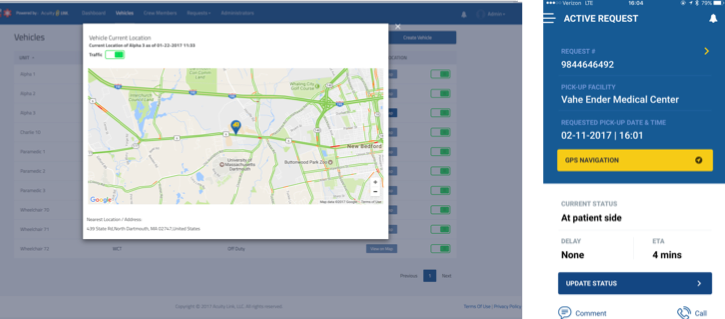Acuity Link Announces Availability of Cloud-Based EMT Software
“The process for ordering a non-emergency ambulance and discharging a patient has essentially been stuck in the 1970’s," the company's founder and CEO said.

In a release today, Massachusetts-based firm Acuity Link announced the availability of software intended to allow ambulance services and hospitals better communicate and coordinate non-emergency patient discharge.
The program is described as a “comprehensive discharge workflow tool allowing health care institutions to better manage discharges by innovating the process of booking non-emergency transportation.” The hospital is able to access the program, submit clinical and transport information, and request transport for a patient. That request is sent out digitally to ambulance services, allowing them to review and accept the transport. The provider can then view active transports and performance analytics within the portal.
The company was founded in 2015, by Alexandre and Spero Theoharidis alongside Michael Pieretti Jr. Alexandre Theoharidis and Pieretti are both EMT-Ps and had both worked as executives of regional ambulance companies before forming a software company. From experience, they identified problems with existing provider-ambulance interactions as motivation for the technology.
“The process for ordering a non-emergency ambulance and discharging a patient has essentially been stuck in the 1970’s…hospital administrators and clinicians would need to pick up the phone, potentially call several non-emergency transport companies, and relay information that could easily be misunderstood or documented improperly,” explained Alexandre Theoharidis in a press release. Alexandre is the company’s President and CEO.

Desktop and mobile interfaces of Acuity Link's EMT software.
“In hospitals where Acuity Link is being used, patients are no longer waiting hours to be discharged to other facilities, which means hospitals increase proper utilization of clinicians and their beds. This results in better patient care and cost savings all at the same time,” said Theoharidis.
The company say the app is completely HIPAA-compliant and “provides various levels of encryption, which meet or exceed industry requirements” for the protection of valuable patient information. The tech exists for both desktop and mobile devices.
The app is another example of multiple GPS, information sharing, and information security technologies being combined to create better hospital apps. Last week, at the HIT Summit in Philadelphia, much attention was given to the potential for more efficient care that exists for companies that can successfully create integrated, comprehensive applications.
Healthy Bottom Line: The Trouble With SDOH Programs and the Secret to Improving Them
September 28th 2021Several problems exist with current programs that address social determinants of health (SDOH); however, a new social model aims to combat these issues and improve the programs’ effectiveness.